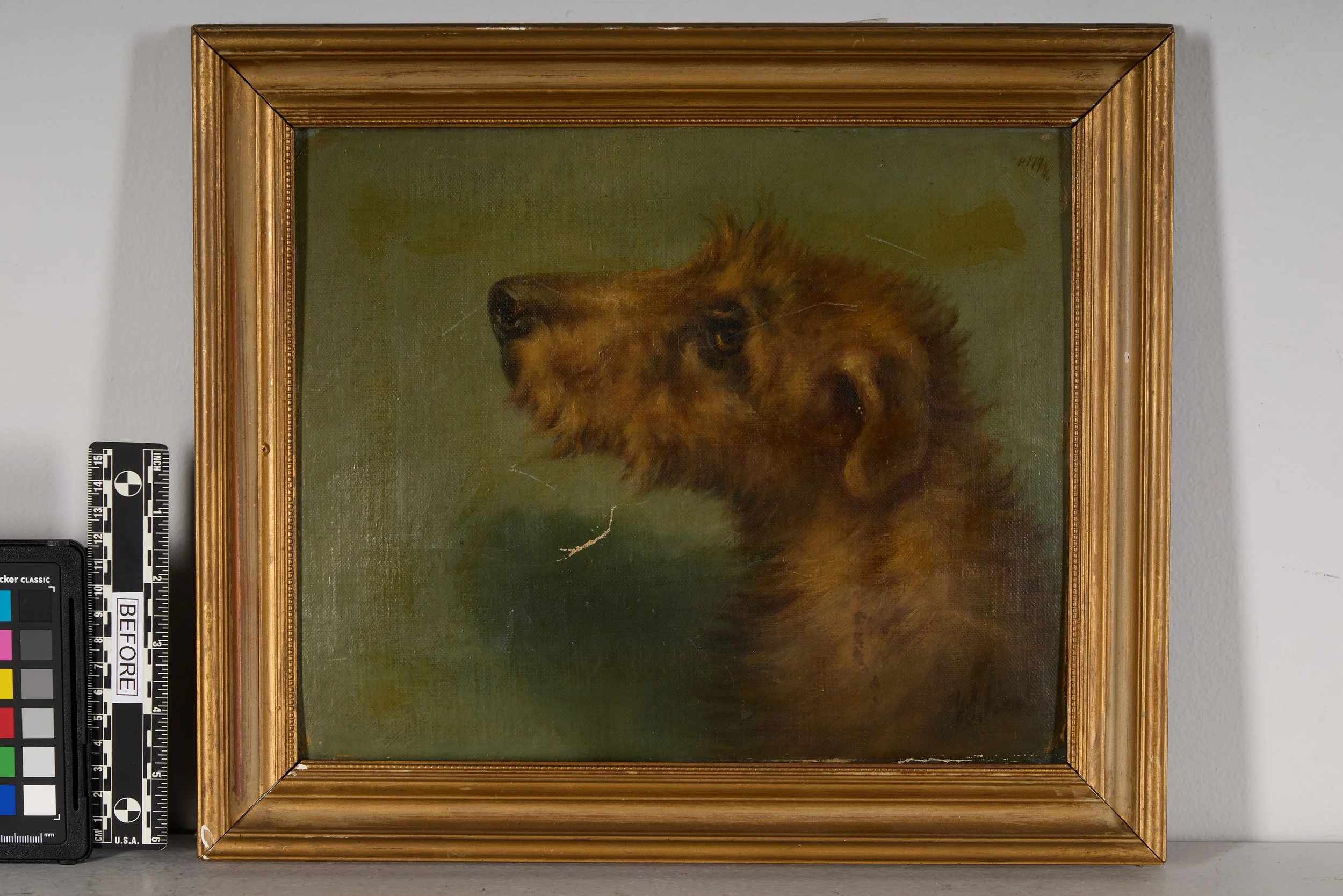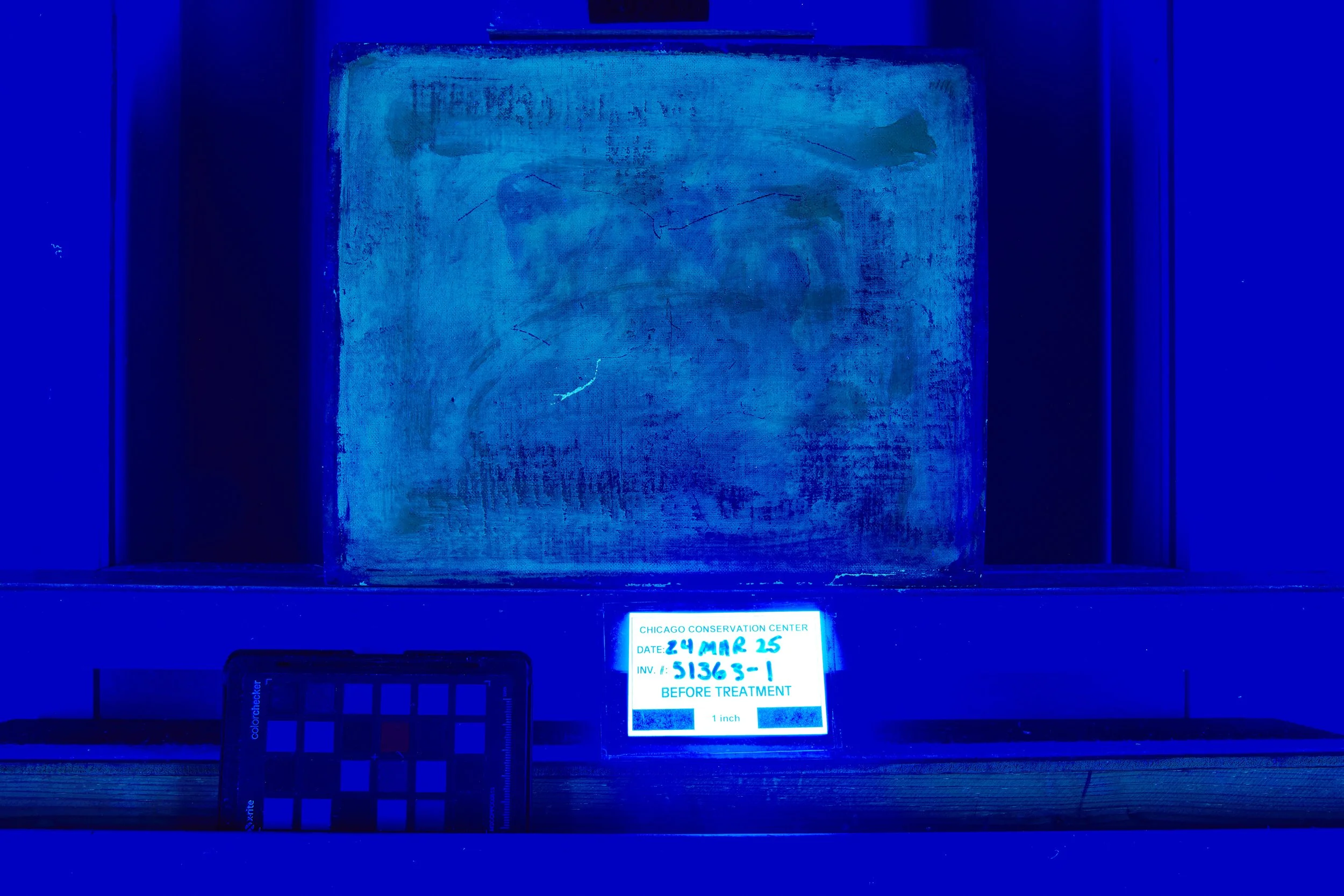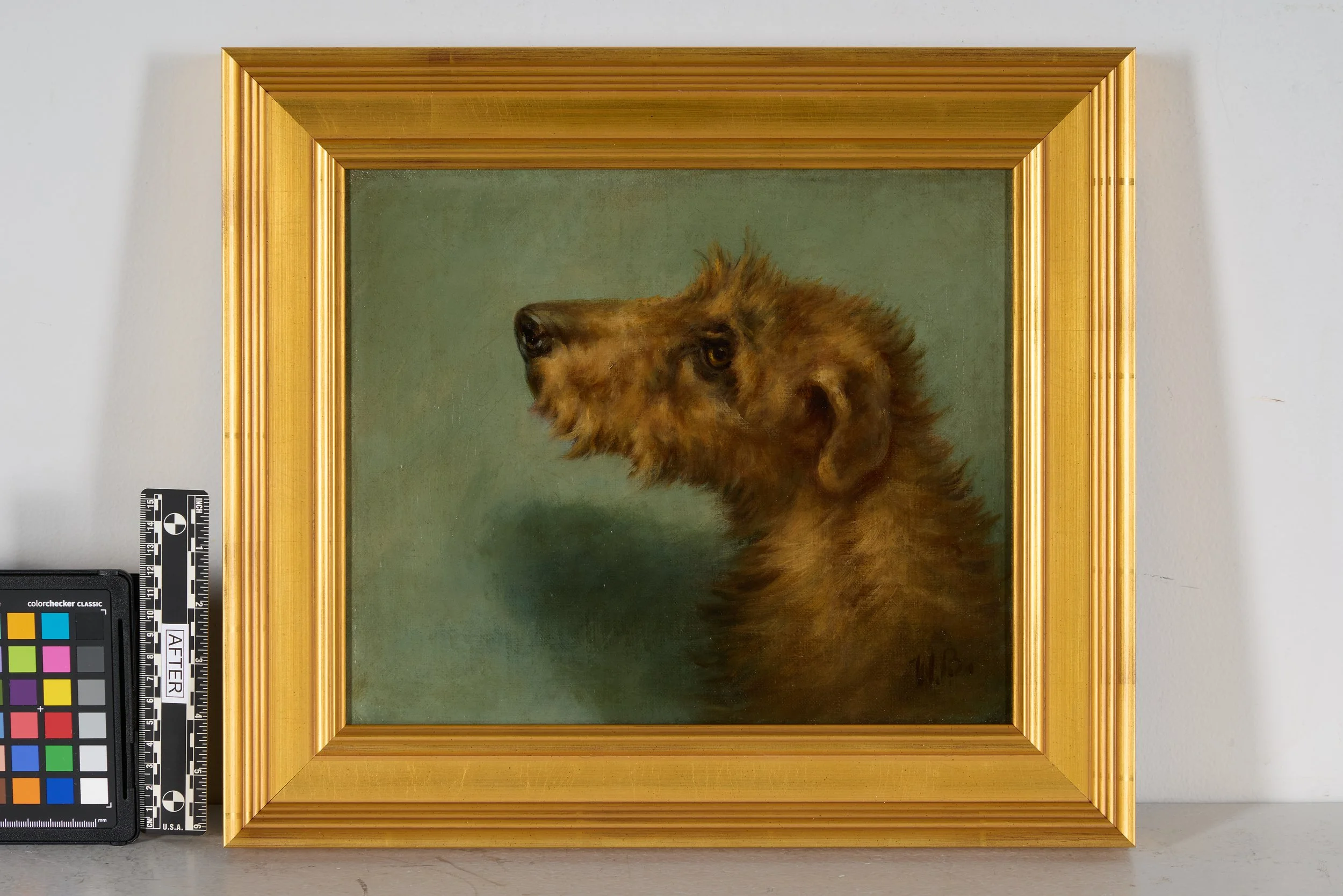The Conservation Center recently had the pleasure of treating a spirited dog portrait by British artist John Emms (1843–1912). Renowned for his naturalistic depictions of animals, particularly dogs and horses, Emms imbued his subjects with personality and warmth that made them beloved in his time—and enduringly appealing today.
Slide to see the painting before and after, and then scroll to learn more about Emms and the treatment process below:


John Emms:
John Emms was born in Norfolk to a family of artists—his father, Henry William Emms, was a painter himself. Early in his career, John worked as a studio assistant to Frederic Leighton, one of the leading figures of Victorian academic art. In the early 1860s, Emms accompanied Leighton to Hampshire, where he is thought to have contributed to the fresco The Wise and Foolish Virgins at St. Michael and All Angels Church in Lyndhurst. That first encounter with the pastoral beauty of the New Forest would prove formative. By 1872, Emms was dividing his time between London and Lyndhurst, and he eventually settled there permanently in the early 1880s.
A passionate outdoorsman and keen horseman, Emms was drawn to the region not just for its landscape but for its rich hunting culture. He quickly became a favored artist among the British aristocracy, receiving commissions from landed families across the Isles who sought his distinctive portraits of horses, hounds, and sporting life.
Though his portfolio included equestrian subjects and genre scenes, Emms was at his finest when painting dogs. His confident, expressive brushwork brought both structure and vitality to his canine groupings. No two animals were treated the same—each dog was rendered with meticulous attention to its markings and a palpable sense of personality. Emms was known to visit local kennels daily, bringing dogs back to his studio one at a time to sketch them from life. The result was an unmistakable liveliness in his work: even when resting, his dogs appear alert and engaged, their individual characters shining through in every detail.
His skill in capturing the musculature, energy, and unique character of animals—especially foxhounds, terriers, and other working breeds—earned him critical and commercial success. Emms regularly exhibited at the Royal Academy and remains a favorite among collectors for the lifelike charm he brought to his canvases.
During the Victorian era, dog portraits were more than just fashionable décor; as Britain industrialized, dogs became symbols of loyalty, stability, and moral rectitude within the rapidly changing domestic sphere. The rise of dog breeding and the formalization of pedigree standards—marked by the founding of The Kennel Club in 1873—fueled a booming interest in canine companions and their representation in art. Owners commissioned portraits to showcase favored breeds, celebrate prizewinners, or memorialize cherished pets. Artists like Emms and his contemporaries elevated these subjects beyond mere likeness, offering sensitive portrayals that captured the emotional bond between humans and their dogs. In many Victorian homes, a well-rendered dog painting signaled refinement, affection, and a connection to both tradition and nature.
The Treatment Process:
When the painting arrived at The Conservation Center, the canvas was delaminating from its paperboard support—especially at the center and edges—causing moderate warping and convex distortion. The surface showed mechanical cracking, creasing, and a notable paint loss beneath the dog’s head. Frame abrasions were present on all sides, with scratches ranging from superficial to deep.
The painting before treatment.
An uneven, discolored natural resin varnish coated the artwork, along with general grime, scattered brown accretions, and unusual dark marks in the upper right corner. The frame showed age-related wear, including open miters, surface dirt, and multiple finish losses.
The painting under ultraviolet light before treatment.
Treatment began with thorough photographic documentation. The paint layer was locally consolidated to prevent further loss. The canvas was carefully detached from the deteriorating board and flattened using heat, suction, humidity, and weight. It was then lined onto a prepared mat board using adhesives formulated for conservation purposes.
Our associate paintings conservator, Rebecca Vodehnal, carefully detaches the deteriorating board from the canvas.
Surface cleaning reduced grime and removed accretions. The discolored varnish was reduced to safely reveal the vibrancy of the original palette.
The painting during treatment.
Losses were filled, textured, and inpainted with reversible paints to match the surrounding areas. A coating of varnish was added to saturate the paint surface and provide a protective barrier. The painting was reframed in a new frame similar to the original.
Losses were filled, textured, and inpainted with reversible paints to match the surrounding areas.
After treatment.
With its lively composition and expressive subject, this John Emms painting is a delightful example of Victorian canine portraiture at its best. This charming portrait not only reflects a historical trend—it reaffirms the timeless bond between artist, animal, and admirer.
Before treatment.
After treatment.








